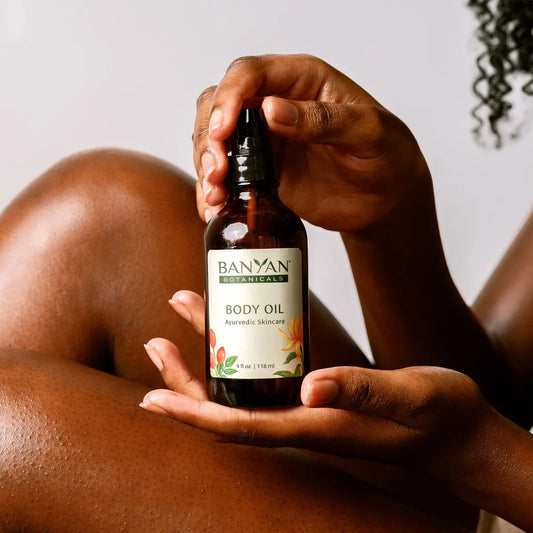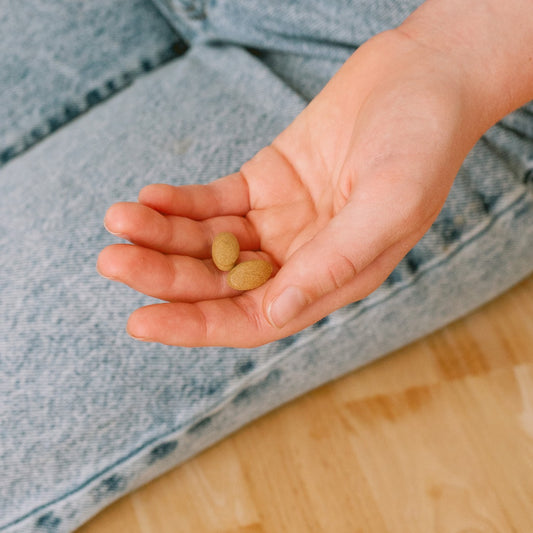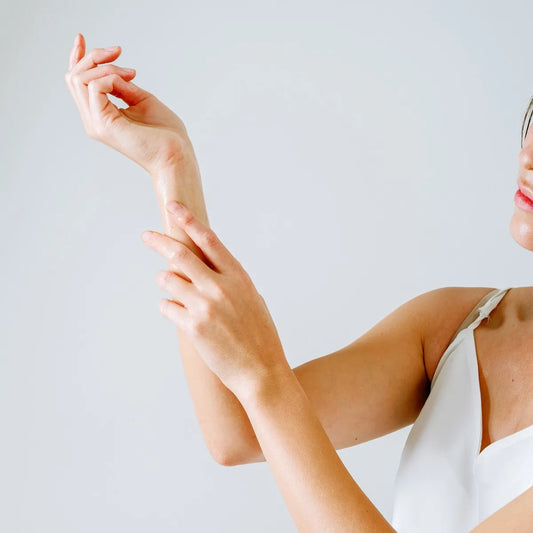Adolescence is a major milestone—marking the end of childhood and the beginning of adulthood, this time period brings with it a sense of excitement, empowerment, and increased freedom for many youngsters.
The transition into adolescence also signals the beginning of the pitta time of life, bringing hormonal changes, dynamic emotions, teenage angst, and pitta-type imbalances, including an outburst of skin disturbances for many. This is because the skin works as an organ of elimination—naturally seeking to remove excess pitta and toxins from the body.
At a time when many are coming into themselves as individuals and hyper-aware of external appearances, navigating skin imbalances can be extremely challenging.
Breakouts can have devastating effects on one's self-image, negatively affecting self-esteem and leading to emotional stress.
Skin disturbances can also happen later in adulthood, causing just as much irritation and inconvenience, especially when we desire to show our best face to the world. Typically, these imbalances are caused by hormonal shifts, ama or toxins in the body, or excess stress.
Ayurveda offers simple remedies and a natural path towards clear, healthy skin. Combining a healthful diet, herbs, lifestyle practices, and mindfulness techniques, this ancient wisdom can help soothe the body and promote our natural inner radiance.
Find Balance with a Skin-Friendly Diet
Following a diet that consists of plenty of fresh organic fruits, vegetables, and grains, while eliminating substances that increase pitta, is one of the most effective ways to promote healthy skin.
This doesn't mean that you can't have a treat every once in a while, but make sure to come back to the following guidelines as often as you can.
- Keep it cool: Favor foods that are intrinsically cooling, such as green vegetables, basmati rice, coconut, cucumber, and cilantro.
- Say hello to aloe: Aloe vera juice is a cooling, bitter tonic, excellent for eliminating excess pitta from the body. Drink a half cup, twice daily. If the taste is not your cup of tea, try adding crushed mint and cucumber.
- Drink up: Drink plenty of fresh water, all day long.
- Too hot to handle: Avoid hot spices, chili peppers, oily, fried, processed, or fermented foods.
- Minimize indulgences: Limit your intake of alcohol, tobacco, caffeine, and processed sugar.

Adopt Lifestyle Practices for Happy Skin
The condition of our skin is a reflection of what's happening inside our bodies. While there are countless products on the market intended to hide or cover up our skin when it is less-than-perfect, why not go straight to the source and cultivate healthy, glowing skin from the inside-out?
Each and every action throughout the day can affect the state of our inner health and the balance of our doshas. Here are some simple daily practices that can minimize the aggravation of pitta dosha and bring balance to the skin:
- Keep it clean: Cleanse the skin twice daily—once in the morning and once before bed—with a gentle cleanser or cleansing oil. Be mindful not to over-cleanse or scrub too hard, as this can aggravate the skin.
- Move your bod: Regular exercise keeps the blood and lymph moving and helps clear excess ama from the body. During warm months, practice gentle and cooling movement such as swimming or yoga.
- Stay shady: Limit excessive sun exposure. Try moon bathing to cool pitta's intense fire.
- Keep good company: Avoid hostile, critical, or judgmental environments. Surround yourself with kind people who love you.
- Express yourself: Excess pitta can manifest as emotions of anger and criticism. When kept inside, these emotions can literally boil over into the skin. Be mindful not to let these fiery emotions explode onto others, but find ways to release them through things like exercise, writing them down on paper, or long, deep exhales.
Discover the Best Herbs for Skincare
When it comes to caring for the skin, the Ayurvedic pharmacopoeia has a lot to offer. Here are some of the most powerful herbs for clearing pitta, restoring balance, and promoting healthy, lustrous skin.
- Healthy Skin: Made with a powerful blend of cooling herbs, Healthy Skin tablets help support a glowing, radiant complexion and the body's natural ability to remove toxins.
- Triphala: An Ayurvedic staple, triphala supports healthy elimination, detoxification, and tonification of the gastrointestinal tract.
- Neem: One of the most cooling Ayurvedic herbs, neem works to clear pitta from the blood and promote clear, healthy skin. Washing with Neem & Aloe Soap is ideal for oily skin, while Neem Oil can be used for dry skin.
Make Your Own Face Wash
For the longterm health and beauty of your skin, we recommend using a gentle herbal formula to cleanse the skin as opposed to harsh commercial cleansers. This recipe comes from Ayurvedic skin expert Nicole Hinterstocker—it is simple and easy to make at home, and makes a 14-day supply.
Ingredients:
- 4 tablespoons colloidal oatmeal
- 1 teaspoon arrowroot
- 1 teaspoon neem
- 1 teaspoon licorice
- ⅛ teaspoon turmeric
Directions:
Mix all ingredients together and store in an airtight jar, away from direct sunlight. Each time you wash your face, use one teaspoon of cleanser and add enough whole milk to make a creamy paste. Cow's milk or goat's milk works best, but if using a vegan substitute, coconut milk is acceptable.
Splash your skin several times with plain water. Apply the cleanser with your fingertips, lightly massaging in a circular motion for about two minutes to lift away excess dirt and oil. Rinse your skin well with water until all cleanser is removed.
Prioritize Self-Care and Love the Skin You're In
Our face is the first thing we show to the world; it's a part of ourselves that we can't hide. During the times that our skin is acting out, we can feel incredibly vulnerable and exposed to show up and go about our lives as usual. And yet, our skin is only one small reflection of who we are.
The more we cultivate a sense of inner worth, wholeness, and self-esteem, the more our inner light can shine through.
The following practices offer a way to connect to that inner wholeness and cultivate greater self-love, while also cooling and soothing pitta's heat on a very physical level.
Practice Yoga
Yoga helps keep the channels of the body open to help move toxins out. Moon salutations in particular act to calm and cool pitta dosha. Spinal twists help detoxify the system by massaging the liver and spleen, and forward bends cool the body and calm the nerves, bringing a sensation of peace to the mind.
For more information, please visit our resource on yoga for balancing pitta dosha.
Sit in Meditation
Sitting for meditation once or twice daily can ease anxiety about physical appearance, reduce emotional stress, and increase a sense of well-being. It offers an opportunity to shift any negative thoughts we may have about ourselves by connecting us to our true essence—where beauty is more than skin-deep.
This simple So-Hum meditation is a wonderful place to start if you are new to the practice of meditation. You can start with just 5–10 minutes a day and work up from there. Keep in mind it is better to practice for a small amount of time every day than a longer amount of time just once or twice a week.
Explore Pranayama
The practice of pranayama brings an abundance of fresh breath and oxygen to the body, helping cleanse and clear the inner channels and supporting optimal function of our systems of detoxification. Sheetali pranayama, the cooling breath, is excellent for eliminating excess heat and pitta from the body.
To practice Sheetali:
- Sit comfortably.
- Curl or roll the sides of your tongue upward into a tube or "straw" for sucking in air.
- Inhale slowly through the rolled tongue, and then close the mouth and exhale through the nose. If you are unable to roll your tongue into a tube, lightly clench the jaw with tongue pressed against the teeth. Then, inhale through the mouth.
- Notice the instantly cooler temperature of the air, upon inhalation.
- Practice for 15–20 rounds of breath.











